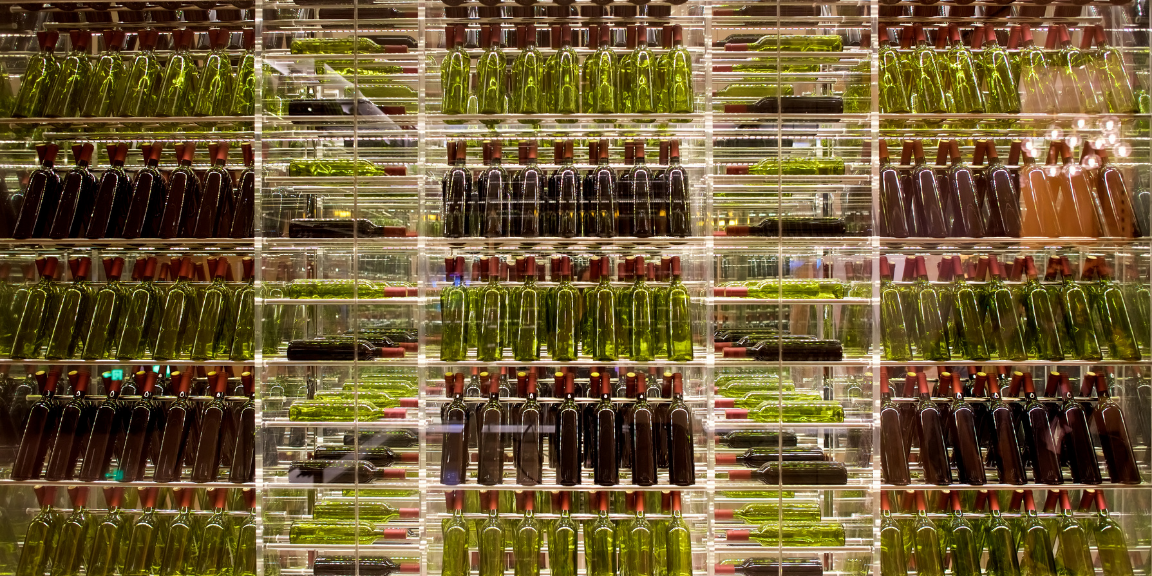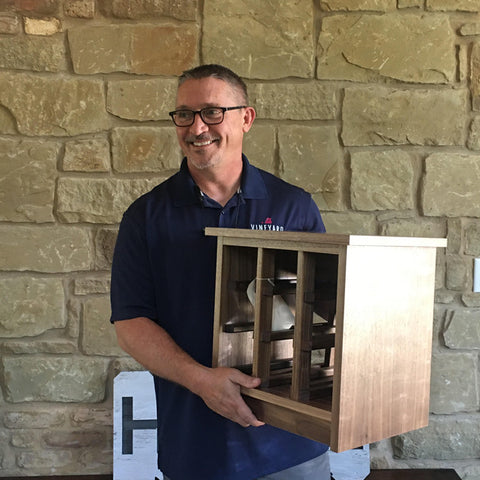If you’ve got it, flaunt it.
A glass wine cellar and cabinet allow you to subtly and elegantly display your massive wine collection to your guests or customers.
A glass wine cellar can become the main feature of your lovely home.
It is also functional, providing a protected storage area for your wines to age.
It adds sophistication and aesthetics to your space, increasing its resale value.
Feast your eyes on some impressive and luxurious glass wine cellar and cabinet ideas, and learn some tips before adding one into your home.
Glass Wine Cellar Ideas and Tips

Tips: things to remember with glass wine cellars
Glass wine storage systems can be self-contained, ducted, or split.
Self-contained wine cooling units are installed through the wall. The condenser and the evaporator are combined inside the appliance. Check product
Also called non-ducted, self-contained systems can have temperature and, in some units, humidity built-in control.
They are also a more affordable option, easy to install, and best for small spaces.
The condenser and evaporator are separate in split cooling systems, where the condensing unit can be placed in an isolated location. These units can be mounted on the floor, against the wall, or on the ceiling.
They are more costly than self-contained units.
Ducted systems can be installed outdoors up to 25 feet away from the wine cellar, which means less noise with flexible installation. Check product
Since the evaporator and condenser are outside, there is no need to vent exhaust or hot air. Ducted wine cooling systems need in-wall installation and require professional HVAC work.
They are ideal for cooling spacious wine cellars.
Keep the temperature stable. The temperature of your wine storage can immensely impact wine quality. Instability in the temperature leads to chemical reactions, changing the wine’s color and taste.
Humidity can break the cork seal of the bottle and expose the wine to oxygen, a known nemesis to tannins in wine.
When wine comes into contact with oxygen, it can turn brown. Wine loses its floral and citrus aromas and gains nutty and boiled vegetable notes. It also flattens their flavors.
Wine should be stored at 55°F with 50–75% humidity.
There is glass wine storage equipped with temperature and humidity alarm systems like the Transtherm Castel Glass Door Black, which also maintains humidity between 55% and 80%.
You don’t need a massive space to build a glass wine cellar. How many bottles are you going to store?
You can store your wine under the stairs, by the wall, or in one of your available rooms or closets.
Ensure that the storage will not hinder your movement or limit your space.
For businesses, wine glass storage looks good in a prominent location like behind the bar. It showcases your available stocks and serves as a focal point.
Framed or frameless glasses are options for choosing the glass for your wine storage. Framed glasses can be double or triple-paned.
Double plane glass is preferred over single panes because it prevents condensation.
Like any well-air-conditioned room, glass wine cellars need to be airtight and insulated to prevent fogging and sweating.
Final Words
Wines used to be stored and aged in wooden containers made of oak or clay vessels in cool, dark, almost cave-like places. Modern architecture now allows displaying your fine bottles in glass cellars and closets as part of your home’s interior design.
There can be challenges since glass conducts heat, and when not constructed properly, it can affect your wine quality. If you want to incorporate a glass wine cellar or storage, plan carefully and speak with experts first.
Check your budget and consider the different options and pros and cons of installing a glass wine cellar in your home or business.
If you need a direct assistance, you may contact Wine Cellar HQ by clicking through this link. We'd love to assist you in your wine collection journey .





